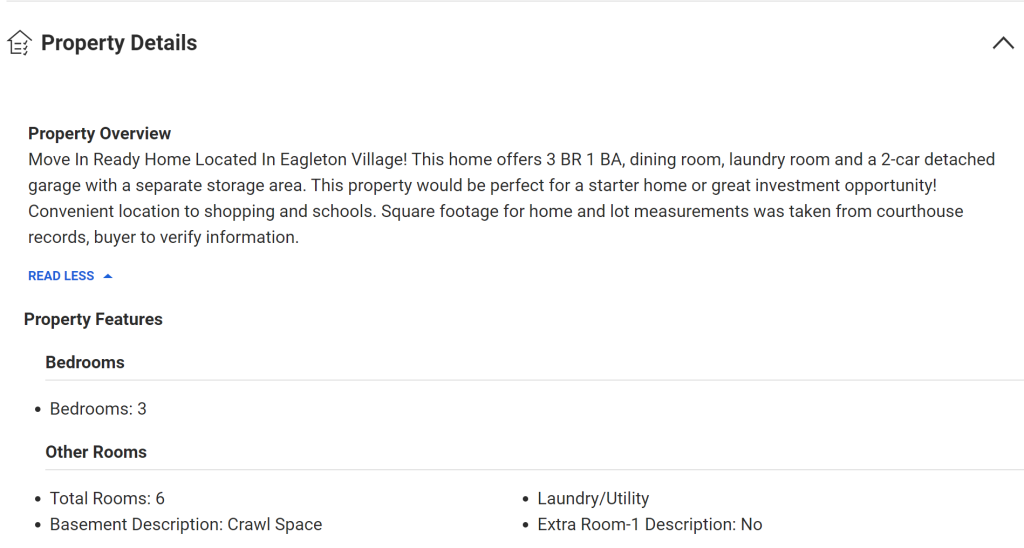When it comes to selling a house, the way it is presented through words and imagery can make all the difference. Expertly crafted real estate listing descriptions can be the key to persuading potential buyers and sealing the deal. However, writing an effective real estate listing can be a daunting task, especially when you need to stand out among hundreds of other similar listings. Even a small oversight on the description, such as a spelling or grammar mistake, can negatively impact interest in a home. So, in this article, we will be covering tips for how to write a real estate listing description that generates interest in the property.
Create attention grabbing headlines
An eye-catching headline is essential for a property listing description. Readers decide whether to continue reading or move onto the next listing by scanning the headline. A good headline should be concise and clear, highlighting the unique selling points of the property that differentiates it from the rest. Use a blend of art and facts to describe selling points such as its features, amenities, and location. If the property has multiple selling points, research which keywords lead to higher sales to choose what to highlight.
Mentioning pools in the real estate listings increases sales by 1% while including hot tubs leads to a 2.7% jump.
Report by Zillow
Here are a few examples of how you can craft a compelling headline using the suggestions above.
“Luxurious waterfront property with breathtaking views”
“Stunning 3 BR modern home with open floor plan and designer finishes”
“Spacious family home with backyard oasis and hot tub”
Highlight unique features
As previously mentioned, the property description should paint a picture of the distinctive character of the home, rather than only facts about the property. This should be crafted strategically in consideration of the ideal clients you want to target and what’s trending in the market. The following are some of the common features that are highlighted to show how the property has an edge over the others.
- Location. If the home is in a prime location, highlight its proximity to amenities such as schools, parks, transportation, and shopping, relevant to the lifestyle of the target clients. Namedrop nearby popular places to generate interest in the property.
- Finishes. Enhance the appeal of the property by describing not only the features it includes, but also the aesthetic it exudes. Highlight well-liked finishes such as hardwood floors, quartz countertops, and stainless steel appliances that are sure to impress potential clients who appreciate the details.
- Renovations. Mention any upgrades in the description such as new flooring and new appliances. Doing so can improve the perceived value of the home, particularly if it is in an older building.
- Outdoor spaces. The description of the outdoor area can be pivotal especially if the target customers are families. Highlight popular features such as a water fountain, swimming pool, or grill appliances in the description. When it comes to urban properties, mentioning access to a private garden or rooftop deck will be sure to convince potential buyers to book an appointment.
- Technology. Emphasize modern amenities and features in a real estate listing. This can be effective in attracting tech-savvy buyers or anyone who places importance on convenience. You might mention any smart home technology, security system, or a state-of-the-art home theater in the home.
Use descriptive language
Writing effective property listings requires using evocative vocabulary to create a positive image of the property. Be mindful about striking a balance between using persuasive language to entice buyers, while also being truthful about the actual condition of the home. Below are some ideas for words you can use in the description to convey different aspects of the home.
- Size and layout. “Spacious”, “roomy”, and “generous” to indicate an ample space. “Cozy”, “compact”, and “snug” to describe smaller spaces. While “airy” and “open-concept” can be used to describe a room with lots of lighting and openness.
- Interior. “Luxurious” to portray the property as having high-end finishes and features. “Elegant” and “chic” to indicate that it has a sophisticated and stylish look. “Modern” or “classic” to describe a home that is either of contemporary or traditional design. “Inviting” and “warm” to convey the atmosphere of the space as welcoming.
- Exterior. “Stunning” and “majestic” to emphasize the impressive and visually appealing look of the home. “Serene” and “tranquil” to indicate that the property is in a quiet setting. “Lush” and “landscaped” to describe an outdoor space.
If we put everything together, the following is what a solid property description might look like.
“This charming, historic home has been well-maintained and offers a unique blend of original character and modern updates.”
“This luxurious, modern apartment features a sleek kitchen with high-end appliances, perfect for the home chef.”
“This spacious and bright home features large windows and skylights, creating a warm and inviting atmosphere.”
Leave out unnecessary information
When writing a property description, consider the channels where this will be shared. You may have to prepare different versions of the property’s description depending on how the listing will be displayed. Potential buyers might find basic property data, such as the number of bedrooms and square feet, elsewhere in your online listing. This is usually separate from the description as shown in example below.
Furthermore, some platforms may require you to include your phone number or contact info in the property description. On others this will already be provided in your agent profile linked to the listing. It is key to avoid anything unnecessary to leave as much room as possible for showcasing the property’s most attractive features. In doing so, you can remove any distraction from what will entice potential buyers to take a closer look.
Avoid red flag words
According to a study by Zillow certain words in real estate listings can have a negative impact on its final selling price. When writing a property description, it is crucial to avoid certain “red flag” words that may deter potential sales. These words can include “fixer”, “needs repair” and “old” which can be a turn off for buyers who are looking for a move-in-ready home.
You should also avoid using words that are not necessarily negative, but can give the impression to potential buyers that the price may be negotiable such as “bargain”, “investor”, and “potential”. Consider other words to use to convey the same aspects of the home in a positive light. For example, instead of using dated to describe an old property, you can describe it as charming or historic.
While writing your copy, be extra careful not to use any language that violates the fair housing act. Don’t use language that could be considered discriminatory against a person. To minimize this risk, avoid using names of religions, words that indicate age and gender, and so forth. Steering clear of red flag words and focusing on the positives of the property can create a more convincing appeal to the property.
Sample real estate listing descriptions
This property’s captivating headline – “Your oasis awaits” – immediately piques the reader’s interest and sets a positive tone for the rest of the property description. The agent has done a good job of communicating enthusiasm for the property.
This example really showcases the property’s unique attributes. The agent’s choice of vivid language is sure to captivate potential buyers and generate interest in booking tours.
Selling a property can be tricky. Creating a well-written real estate listing description can increase the chances of attracting and converting potential buyers. Keep your target clients in mind and perform market research for top keywords and features. Using the tips above, you can showcase the potential of the property in a way that both resonates with and allures potential clients. Generating compelling property descriptions can take a lot of time and effort. That’s where Allready.ai can come in. We help streamline the process of writing property descriptions using the power of AI. Learn more about about the AI writing assistant for real estate professionals here.




